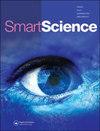Design, implementation, and analysis of an asymmetrically configured DK-type multilevel inverter
IF 1.4
Q2 MULTIDISCIPLINARY SCIENCES
引用次数: 0
Abstract
ABSTRACT This work proposes a new configuration of asymmetrical MLI which is called a dual kite type (DK-type) multilevel inverter. Its special features include the low total standing voltage (TSV) along with less number of total components. The basic module of the proposed structure is able to generate 15 levels without the use of h-bridge. This results in decreasing the voltage stress considerably. The extension of the proposed circuit can be done in order to increase the levels. The operation of proposed MLI has been discussed in detail, and its comparison with some recently proposed topologies has been done in the paper. Moreover, the simulation results for different constant and dynamic loading conditions have been presented and experimental verification of the same has been done and results have been shown. Fundamental frequency-based switching strategy, also called nearest level control (NLC) modulation technique, is used for providing the switching signals. Further, loss evaluation in the proposed structure has been completed with the help of PLECS software. 5.5% THD is present in the output voltage. The proposed MLI has the maximum efficiency of 98.68% at the output power level of 0.5 kW. The results and analysis presented in the paper describe the improved performance of the proposed MLI. Graphical abstract非对称配置dk型多电平逆变器的设计、实现和分析
本文提出了一种新的非对称多电平逆变器结构,称为双风筝型(dk型)多电平逆变器。它的特点包括低总电压(TSV)和较少的总元件数量。所提议的结构的基本模块能够在不使用h桥的情况下产生15层。这大大降低了电压应力。为了提高电平,可以对所提出的电路进行扩展。本文详细讨论了该拓扑结构的操作,并与最近提出的几种拓扑结构进行了比较。给出了不同恒载和动载条件下的仿真结果,并进行了实验验证,给出了仿真结果。基于基频的开关策略,也称为最近电平控制(NLC)调制技术,用于提供开关信号。此外,在PLECS软件的帮助下,完成了所提出结构的损耗评估。输出电压中存在5.5% THD。在输出功率为0.5 kW时,效率最高可达98.68%。文中给出的结果和分析描述了所提出的MLI的改进性能。图形抽象
本文章由计算机程序翻译,如有差异,请以英文原文为准。
求助全文
约1分钟内获得全文
求助全文
来源期刊

Smart Science
Engineering-Engineering (all)
CiteScore
4.70
自引率
4.30%
发文量
21
期刊介绍:
Smart Science (ISSN 2308-0477) is an international, peer-reviewed journal that publishes significant original scientific researches, and reviews and analyses of current research and science policy. We welcome submissions of high quality papers from all fields of science and from any source. Articles of an interdisciplinary nature are particularly welcomed. Smart Science aims to be among the top multidisciplinary journals covering a broad spectrum of smart topics in the fields of materials science, chemistry, physics, engineering, medicine, and biology. Smart Science is currently focusing on the topics of Smart Manufacturing (CPS, IoT and AI) for Industry 4.0, Smart Energy and Smart Chemistry and Materials. Other specific research areas covered by the journal include, but are not limited to: 1. Smart Science in the Future 2. Smart Manufacturing: -Cyber-Physical System (CPS) -Internet of Things (IoT) and Internet of Brain (IoB) -Artificial Intelligence -Smart Computing -Smart Design/Machine -Smart Sensing -Smart Information and Networks 3. Smart Energy and Thermal/Fluidic Science 4. Smart Chemistry and Materials
 求助内容:
求助内容: 应助结果提醒方式:
应助结果提醒方式:


